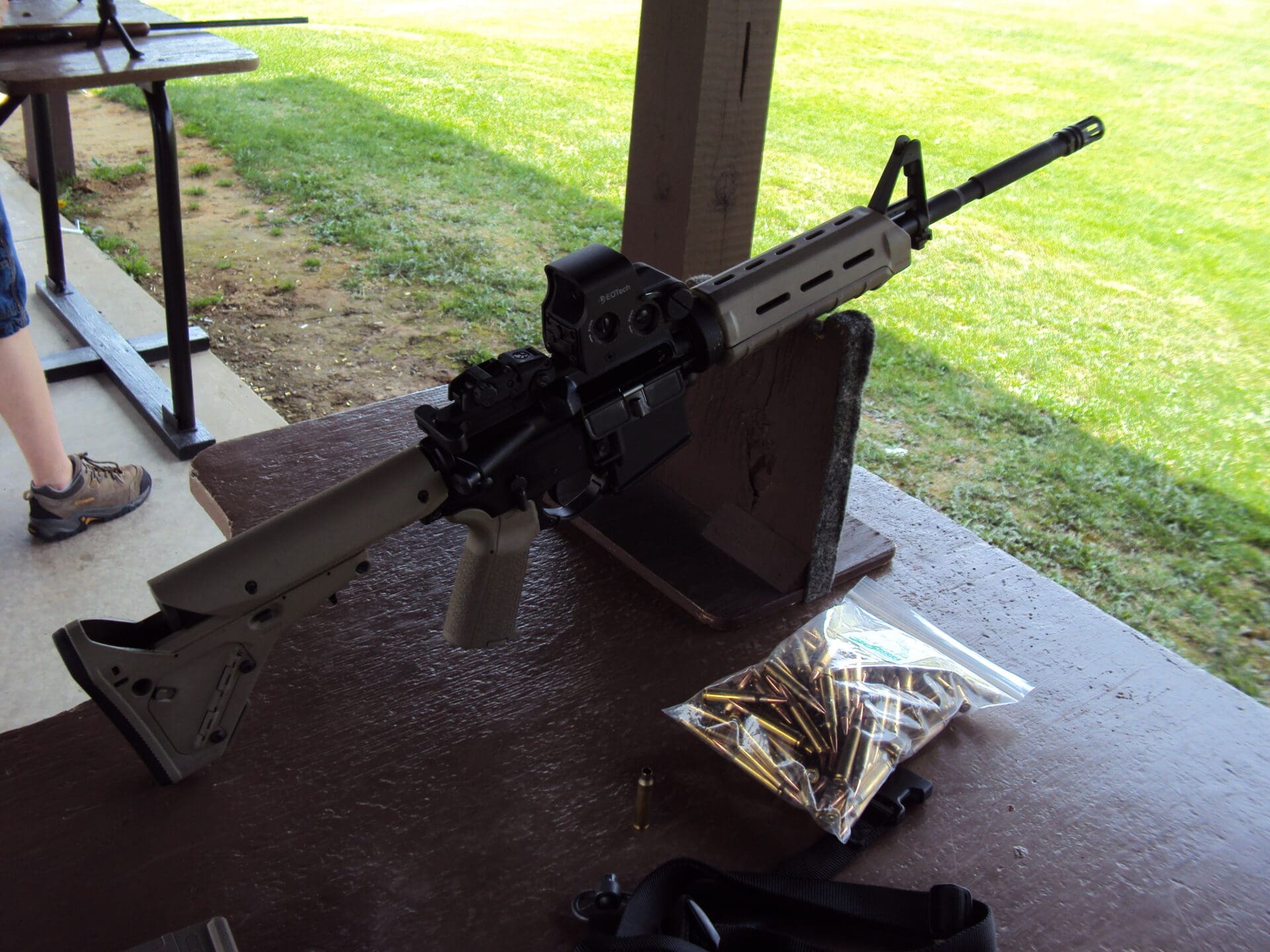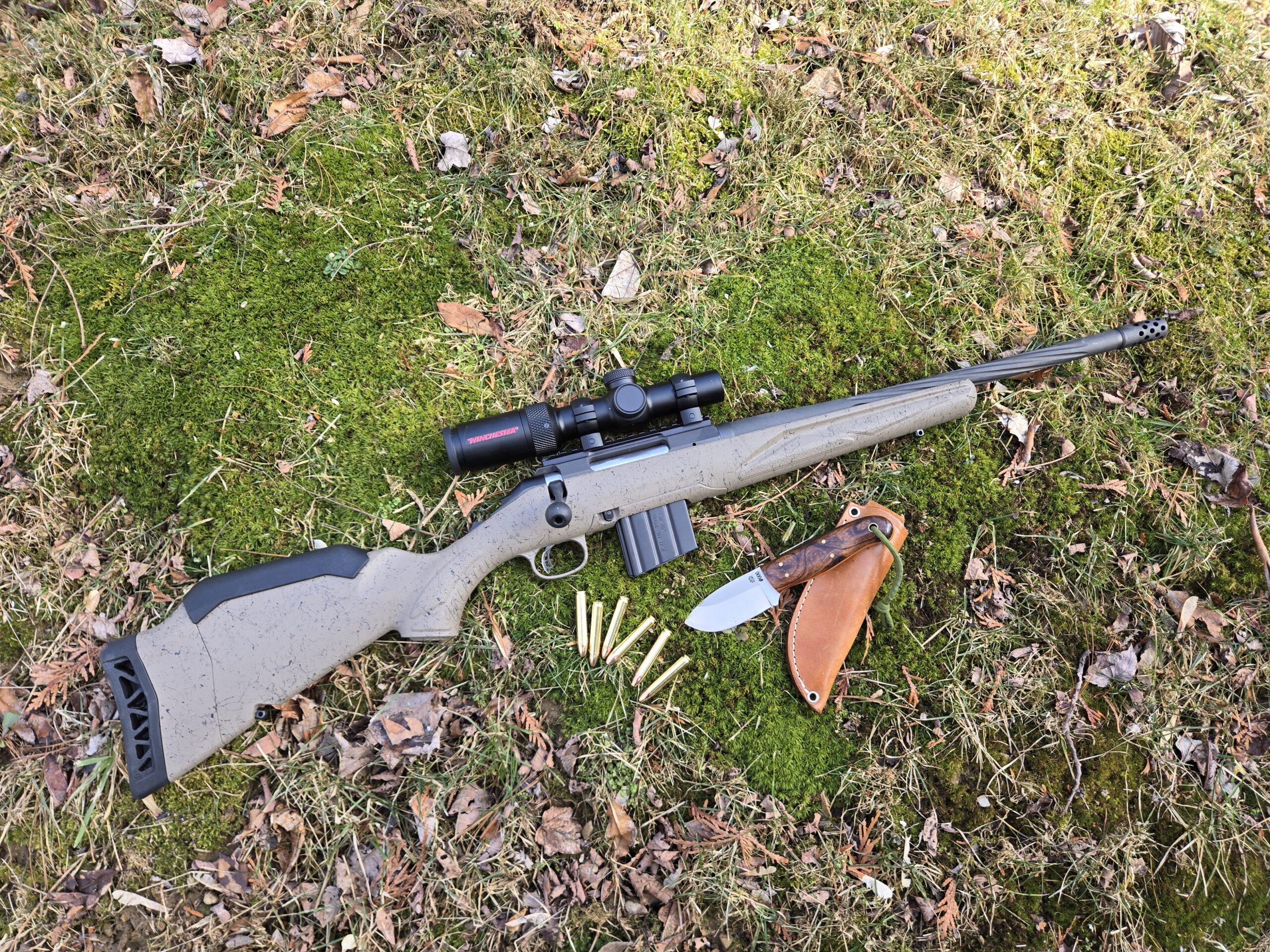The term “free float handguards” is something you see a lot on “precision” AR-15 builds — guns designed to pluck the wings off a fly from 500 yards. But what exactly do they do? One reader asked about them as a fix for barrels becoming too hot (see Friday’s Ask Foghorn), but that’s not really their intended purpose. Are they useful, or like full length guide rods on a 1911 are they just a way to gouge you for more cash? Let me explain…
One of the first things everyone does when they get a new gun or swap the optics on an existing one is “zero” the gun. The idea is to make the aiming devices mounted to the firearm line up with where the barrel is actually pointing, which enables the shooter to then fire with confidence secure in the knowledge that their rounds will impact exactly where they are aiming. This is also described by some as “aligning the point of aim with the point of impact.”
The issue with firing accurately at distance is that even the slightest changes in the alignment of the barrel can throw the round way off target. Even though barrels are typically made of hardened steel and other tough stuff the fact that they’re rather long allows even minute forces to act on them like a lever.
Using a barrel that hasn’t been free floated means that every time you change the forces working on the barrel, whether that comes from resting the forward handguards on a stand or simply gripping the handguards differently the barrel will bend and the bullets won’t necessarily go where you wanted them to go.
As the barrel heats up the stock will continue to press on the barrel and throw the rounds off even farther, meaning even if you never change how the gun rests or how you hold it the rounds are still going to spread out worse than they should.
Free floating the barrel is the solution to this issue. On a traditional rifle (such as a bolt action Weatherby Vanguard) a sufficiently rigid stock must be selected and material must be removed from the stock forend (around the barrel) until the barrel no longer touches the stock. The standard test for if a barrel is free floated is the ability to run a dollar bill between the stock and the barrel all the way to the receiver.
On an AR-15, the handguards need to be designed in such a way that they mount to the receiver instead of the barrel (as traditional handguards use a device near the gas block to hold the far ends of the handguards). Once this has been done the barrel “freely floats” fully independent of outside forces pressing on it.
Naturally this puts more stress on the receiver (as it now needs to support the weight of the entire rifle) which leads to things like “aluminum bedding” or “(fiber)glass bedding” for the receiver which provides a more solid way to marry the metal and wood portions of the firearm.
Free floated barrels do in fact lead to smaller groups.
As a perfect example, I was shooting my Weatherby Vanguard yesterday with its brand new free-floated stock and my groups were at least 1/2 the size they used to be with the non-free floated factory stock. One simple change (that cost less than $100) made the difference between 1.5 and 0.5 MoA groups at 100 yards.
Some firearms are more expensive to free float than others, but thankfully there are free float options available for the AR-15 system for less than $50, and “good” ones are available for less than $100.
If you’re a serious shooter then your rifles should probably have free floating handguards, and especially with the low associated cost I can’t think of a reason not to. Even so, I like to keep at least one cheap “standard” AR-15 16″ upper laying around to try out new stuff and let the newer shooters use. At the end of the day it all boils down to whether the expense is worth that extra accuracy, and for me it mostly makes sense.
If you have a topic you want to see covered in a future “Ask Foghorn” segment, email guntruth@me.com.
To browse previous Ask Foghorn segments visit http://www.thetruthaboutguns.com/category/askfoghorn/.











This is a great article! very well written. I have a quick follow up question… I have an ar15 with a 14.5 inch, GI profile, free-floated barrel. there is very minimal space between the gas block and free floating handguards, but it is free all the way around. 1.) Is this sufficient? If I understand your article correctly, the accuracy of a barrel with touching handguards is affected before the trigger is pulled, due to the forces the user places on them by resting it or gripping it. so, though my handguards afford me minimal space between the gas block and guard itself, as long as they do not contact one another, the barrel is unaffected until I pull the trigger… am I seeing this right? 2.) that being said, once the round is fired, and harmonics do their thing and move the barrel, do I need to be worried about the gas block striking the inside of the handguard? will this do any damage to the barrel or receiver at the contact point of the barrel? will this be sufficient enough to knock my sights out of alignment?
I come from a military background and have pretty extensive experience with m16s and m4s. from the 60 or so rounds I’ve fired from my ar in this configuration, all seems to be in good order. but I really wanted to get your take on this. thanks for your time and assistance!
Nick Leghorn, you mention that “there are free float options available for the AR-15 system for less than $50, and “good” ones are available for less than $100.” Can you elaborate?
I’ve shot all sorts of handguns. I’ve shot glocks, colts, sigs, Smith and wesson, ruger. For ME I’ve never shot better than with a Springfield XD. My dad has the XD 40 subcompact and 4.5, my brother has the 40 subcompact, I bought my wife the 40 sub compact, I’ve shot my friends 40 XDM (older model) and then I got a 45 XDs. Every single XD I’ve shot I’ve never shot anything better. Heck, here’s a video of me shooting the XDs at 40 yards with one hand and getting a headshot. http://www.youtube.com/watch?v=ImzXLHgVbHQ
All that to say, I’m selling off some stuff and buying the new 40 XDM 5.25″. These guns are quality. Only problem I’ve had with the XDS is if I have a live round in the chamber and want to extract it to clear the chamber, it is difficult cause the space with the ejection is so small that it barely clears the distance of a case with the bullet still in it. Sometimes it’ll catch. Other than that, these guns are legit.
I started with a A4 20″ rifle. I replaced the heavy barrel with a pencil barrel. The front sight block that came with that vibrated loose when shooting NATOs, so I replaced that with a low profile gas block. I replaced the iron sights with EOTech with multiplier. I just ordered a M4-72 muzzle brake and a FM-9 15″ free float handguard.
I shoot at least 100 rounds every time I go to the range (a couple times a month).
My question: where should I put my support hand? I never use sandbags, a bipod, etc. I just support with my elbows with my support hand as far out on the A4 handguards as possible. My finger touches the front of the triangular handguard cap. But when I replace the A4 handguard with the 15″ free float, will I need to move my support hand back closer to the receiver? The free float will attach with only a barrel nut. Won’t the handguard bend or something if I’m gripping it 15″ from the attach point?
I’m replying to my own question. I found that the free float and its attachment were so sturdy that it easily supported my rifle even with my support hand all the way out on the end.